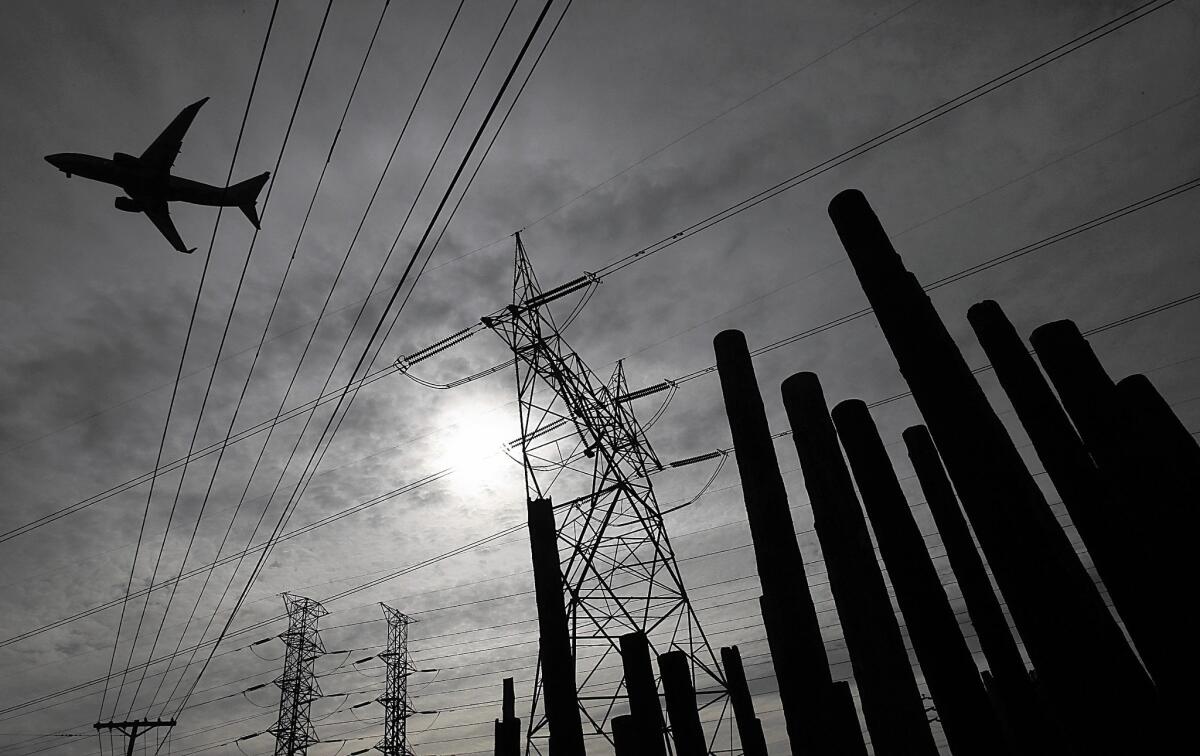Study outlines congestion, air pollution improvements for Bob Hope Airport

A recent transit study outlines potential improvements around Burbank Bob Hope Airport to enable it to serve as a transportation hub within the region.
Planes, trains and automobiles — and buses and bikes and even good old walking.
All these modes of transportation converge at Bob Hope Airport, and a recent transit study outlines potential improvements around the airport to enable it to serve as a transportation hub within the region.
The study, which was initiated in September 2011 and paid for mostly by a $5.4 million federal grant, looked at ways to reduce traffic congestion and air pollution while improving connectivity to the airport both along the Antelope Valley rail corridor and from Pasadena via Glendale.
Massive changes are expected in the airport area, with plans for a modern replacement terminal under negotiation with the city and a proposed high-speed rail station under consideration at the state level. A roughly 58-acre airport-owned property, the former location of Lockheed’s B-6 plant, is being marketed for sale and is expected to attract the interest of developers worldwide.
The authors of the study note that the airport is ideally situated to be the “epicenter for multi-modal connectivity for the San Fernando Valley,” but they attribute low use of transit by airport employees and travelers to “several large gaps” in the transit network — particularly the lack of a direct connection to Metro trains, bus or light rail.
According the study, about three-fourths of airport employees and passengers drive their own vehicles to the airport — another 13% of passengers drive rental cars — but the percentages for taking any of the other transit options were in the single digits for each group.
While the Burbank-Glendale-Pasadena Airport Authority’s power is limited to airport property, through the study it sought to act as a catalyst for transit improvement throughout the region, Mark Hardyment, the airport’s director of government and environmental affairs, said in a report about the study during an authority meeting last week.
That required partnerships with entities such as the city of Los Angeles, Los Angeles County Metropolitan Transportation Authority and the California Department of Transportation, he said, adding that “in many cases, we found that the authority had become very insulated, and we had to develop these partnerships.”
The airport’s efforts helped spur some projects that were initiated before the study was completed, Hardyment said, such as traffic mitigation measures related to 5 Freeway construction projects and a planned Metrolink station on Hollywood Way and San Fernando Boulevard.
Tyler Bonstead, a consultant with STV Inc. who led the study effort, also noted the recent increased Burbank Bus service between the North Hollywood Metro station and the airport as improvements identified in the study that had already been implemented.
Capital and operational improvements and commitments stimulated by the study totaled $38 million, said Norm Emerson of Emerson & Associates, who assisted with the study. The airport could further leverage its investment to attract new funding from sources such as the state’s cap-and-trade program, he said.
The study proposes increasing the frequency of Metrolink trains serving the airport to fill gaps in service during the day, installing displays at the air terminal with information about arriving and departing trains to encourage ridership, as well as an express freeway bus from the airport to a Metro Gold Line station in Pasadena — Hardyment said the latter is already being planned.
Longer-term and higher-cost improvements, which Bonstead said could be 20 to 30 years in the making, such as extension of the Metro Red Line to the airport area, an automated people-mover to connect the nearby Metrolink stations to the terminal and possibly light rail service to Pasadena, were also evaluated.
“Something to keep in mind on some of these is that the long-term ones may make sense as other types of improvements come into the area, like, say, a high-speed rail station,” Bonstead said. “At that point, you’d have a lot of interest in something like a Red Line connection to the airport area.”
Garland is a reporter for Times Community News.
Twitter: @chadgarland
More to Read
Sign up for Essential California
The most important California stories and recommendations in your inbox every morning.
You may occasionally receive promotional content from the Los Angeles Times.










